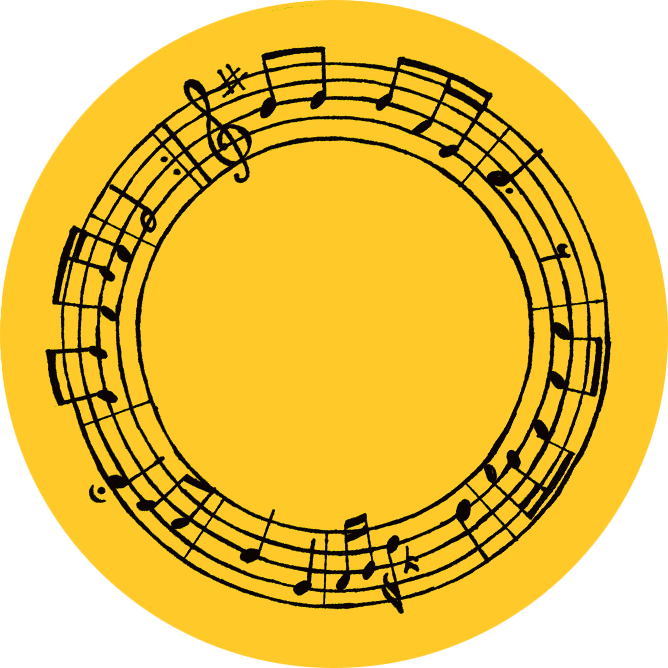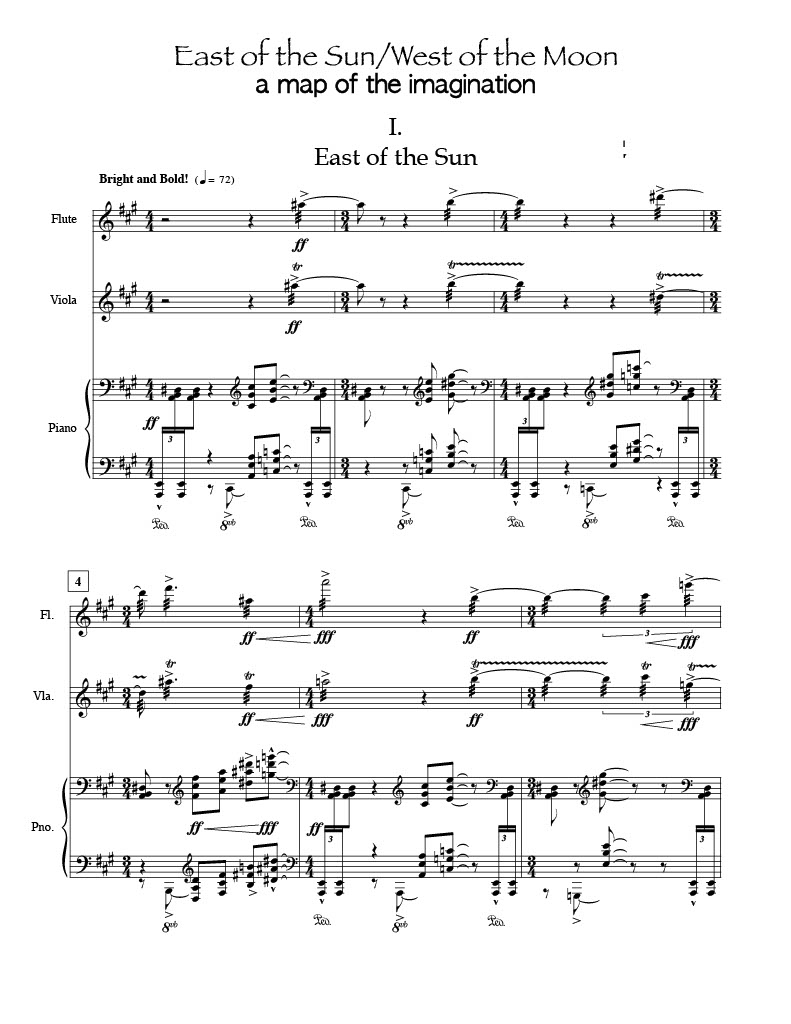About the piece
I. East of the Sun
II. here is a desert (solo viola)
III. The wonderful moo moo bird
IV. The City of Many Towers
V. here the north wind lives
VI. The City of Many Towers (reprise)
VII. In this place there are peculiar fishes
VIII. Don’t walk too near the edge
IX. An empty Cage
X. West of the Moon
XI. the path that leads to No-Place
A whirlwind tour through a land of fantasy. The movement titles were taken from the whimsical labels Jaro Hess applied to his imaginative 1930’s map, entitled “The Land of Make Believe.”
The journey opens with a grandiose blaze of sunlight, quickly followed by the viola as it scurries across a sunbaked desert. The flute and viola then strike up a conversation as birds with outrageous plumage. Moving into civilization, we enter “The City of Many Towers,” which was inspired by the faded grandeur and hubris of the medieval Tuscan town of San Gimignano. Between this movement and its reprise, the flute impersonates the North Wind whistling past the weathered stones. In a lake outside the city, peculiar fish twist a Mendelssohn song out of shape and pull it under. Leaving the strange waters, we traverse a dangerous path while being pursued by pounding piano clusters, slippery runs and wild glissandos, only to escape when the piano runs out of keys, the viola abandons its strings, and the flute finally gasps, exhausted. “An Empty Cage” offers us 4.33 seconds of silence as respite before the moon rises. Since the moon reflects the light of the sun, “West of the Moon” gently reflects the opening blaze. At the voyage’s end, the piano continues on, taking a cyclic path as it rises to reach beyond toward a mysterious No-Place.
Listen
performed by Jessica Lizak, flute; Peter Sulski, viola; Karolina Rojahn, piano

Instrumentation
flute, viola, and piano
Duration
year written
2012
commissioned by
Margaret Halbig, Calisa Hildebrand, and Shannon McCue

